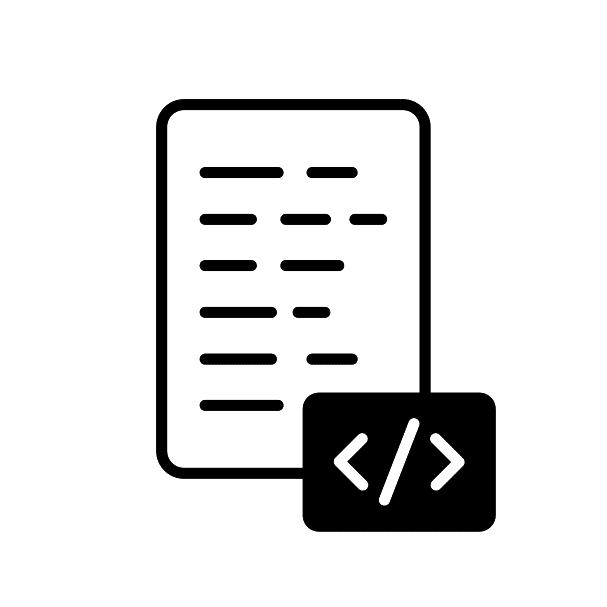Craft interactive and captivating websites with HTML, CSS, and Javascript.

Nos professeurs et tuteurs sont diplômés des meilleures universités








Aperçu

Customized Coding Curriculum
Sélectionnez vos langages de programmation ou sujets préférés et nous vous mettrons en relation avec un tuteur expert pour une expérience d'apprentissage personnalisée.

Adaptable Coding Lessons
Votre parcours d’apprentissage est personnalisé en fonction de votre rythme et de vos défis uniques, garantissant une progression fluide sans aucune distraction ni exigences concurrentes.

Personalized One-on-One Instruction
Votre parcours académique est méticuleusement conçu pour s'adapter à votre rythme et aux défis choisis, garantissant un développement ininterrompu, sans distractions ni engagements concurrents.
À propos des langages de développement Web
HTML, CSS, and JavaScript are often considered the essential components of web development, each playing a critical role in creating web experiences. HTML, or HyperText Markup Language, serves as the foundation of any website. It provides the structure, organizing elements like headings, paragraphs, and lists into a coherent layout.
CSS, or Cascading Style Sheets, acts like the stylist of the web world. It controls the visual aspects of HTML elements, including color, font, and layout. With CSS, you can make your site look good on various types of devices, like tablets and smartphones, ensuring a responsive design.
JavaScript serves as the interactive layer, capable of altering HTML and CSS in real-time to offer features like real-time updates, form validations, and dynamic content changes. It is used both on the client side for browser-based interactions and on the server side when combined with frameworks like Node.js.
Beyond these three core technologies, a variety of other languages and frameworks are available to developers. Backend languages like PHP, Python, and Ruby offer different approaches for server-side logic. Frontend frameworks like Angular, React, and Vue make it easier to build complex applications. SQL is commonly used for database interactions, enabling the storage, retrieval, and manipulation of data.
Mastering these core technologies—HTML, CSS, and JavaScript—is often the first step for aspiring web developers and serves as a foundation for diving into more advanced tools and languages. Understanding how these languages interact to create the final user experience is essential for success in a continuously evolving digital landscape.
Description
Unlock the creative possibilities of web development in this hands-on course. Learn the essential languages of HTML5, CSS3, and Javascript to build visually stunning, interactive websites from the ground up.
Master the art of responsive design to ensure your sites look incredible on any device. Go beyond the basics with advanced topics like API integration and version control for maximum website reliability and functionality. Throughout this enriching course experience, you’ll also gain real-world insights into web performance optimization and accessibility, equipping you to create not just visually appealing but also efficient and inclusive web applications.
Ce que vous apprendrez
- In-depth HTML, CSS, and basic Javascript skills
- CSS positioning techniques: relative, static, absolute, fixed
- Understanding of the Document Object Model (DOM)
- Principles of responsive web design
Exigences
- Age 9-18
- Débutants dévoués en programmation
- Intéressé par la création de sites internet
FAQ des étudiants sur le développement Web
Front-end development focuses on what the user interacts with directly in the web browser. This involves HTML, CSS, and JavaScript. Back-end development deals with the server and database, responsible for ensuring that everything on the client-side actually works. Back-end languages include PHP, Ruby, and Python.
Responsive design refers to the design approach where a website’s layout adjusts itself depending on the screen size and orientation. This is mainly achieved through CSS and sometimes JavaScript.
Frameworks are pre-prepared libraries that offer a way to simplify complex actions, whether it be designing a view with Bootstrap or developing client-side applications using Angular or React. They provide pre-written code to give you a head start.
APIs (Application Programming Interfaces) allow your website to connect with other software applications or web services for data retrieval or functionalities like payment processing.
Server-side rendering produces the full HTML for a page on the server in response to a user request. Client-side rendering, on the other hand, builds the page directly in the browser using JavaScript. Both have their pros and cons in terms of performance and SEO.
A slow-loading website can negatively affect user experience and SEO rankings. Optimizing performance involves various techniques like image and video compression, lazy loading, and efficient use of CSS and JavaScript.
Web accessibility ensures that websites are designed and developed so that all users, including those with disabilities, can use them. This includes providing alternative text for images, ensuring keyboard navigation, and making sure the website works well with screen readers.
Fonctionnement
1
Demander un tuteur
Faites-nous part de vos objectifs et de votre tranche d’âge. Nous élaborerons un plan pour vous aider à y parvenir.
2
Match avec un tuteur
Nous vous recommanderons un tuteur en fonction de vos besoins et de vos objectifs, ou vous pourrez demander un tuteur spécifique.
3
Commencer un essai gratuit
Vivez une leçon d'essai gratuite avec votre nouveau tuteur et voyez si votre style d'apprentissage correspond.
4
Continuez!
Si tout s'est bien passé, inscrivez-vous pour continuer ! Vous pouvez choisir le rythme des cours
Besoin d'informations?
Parlons.
Laissez votre numéro de téléphone et nous vous rappellerons pour discuter de la manière dont nous pouvons vous aider.


